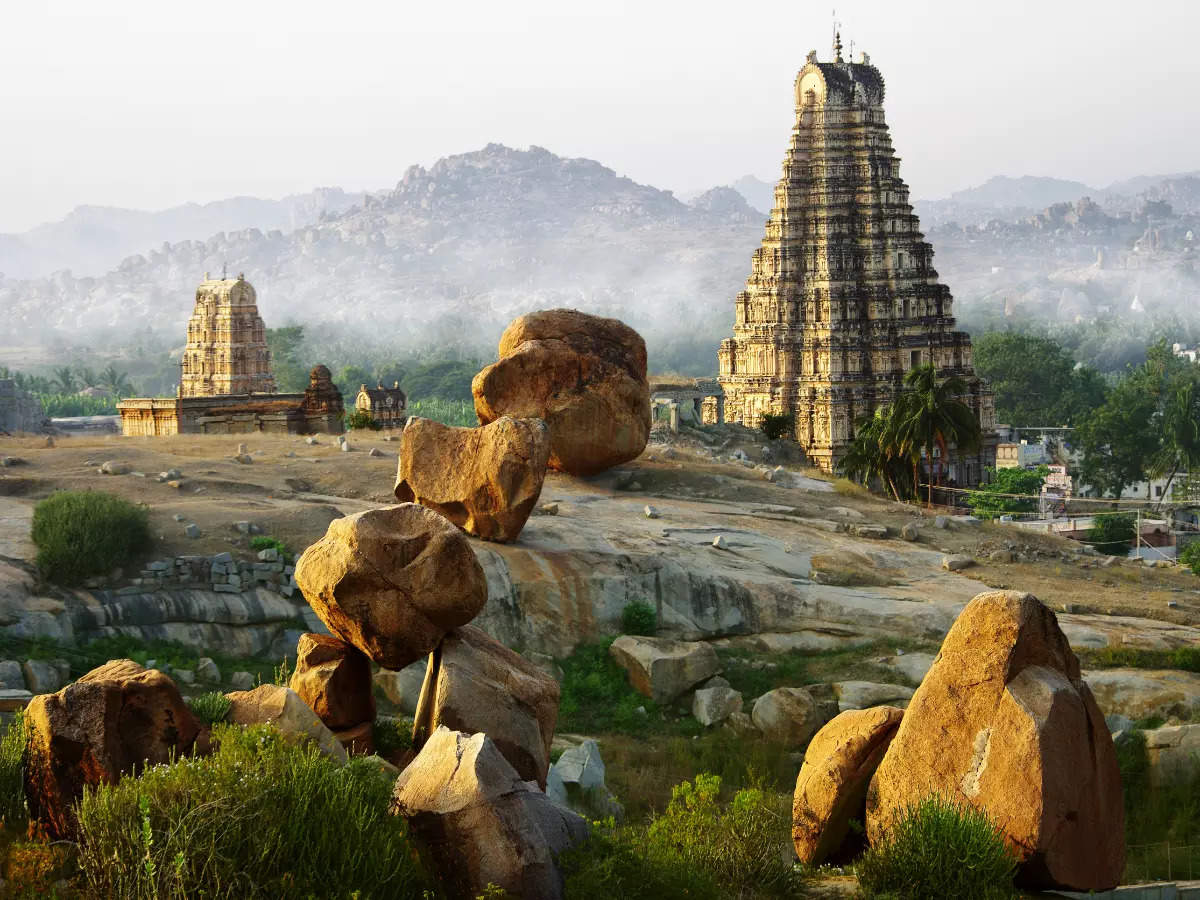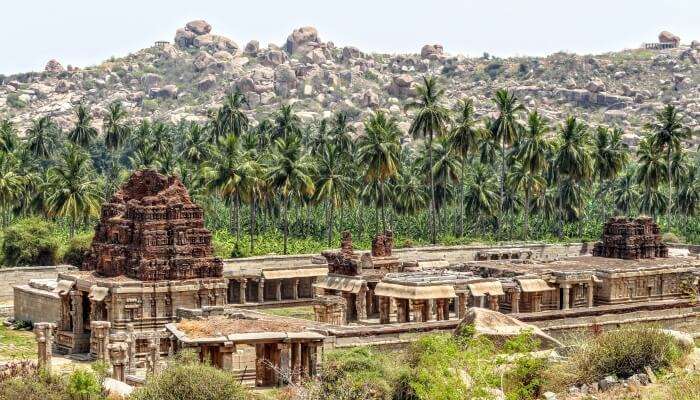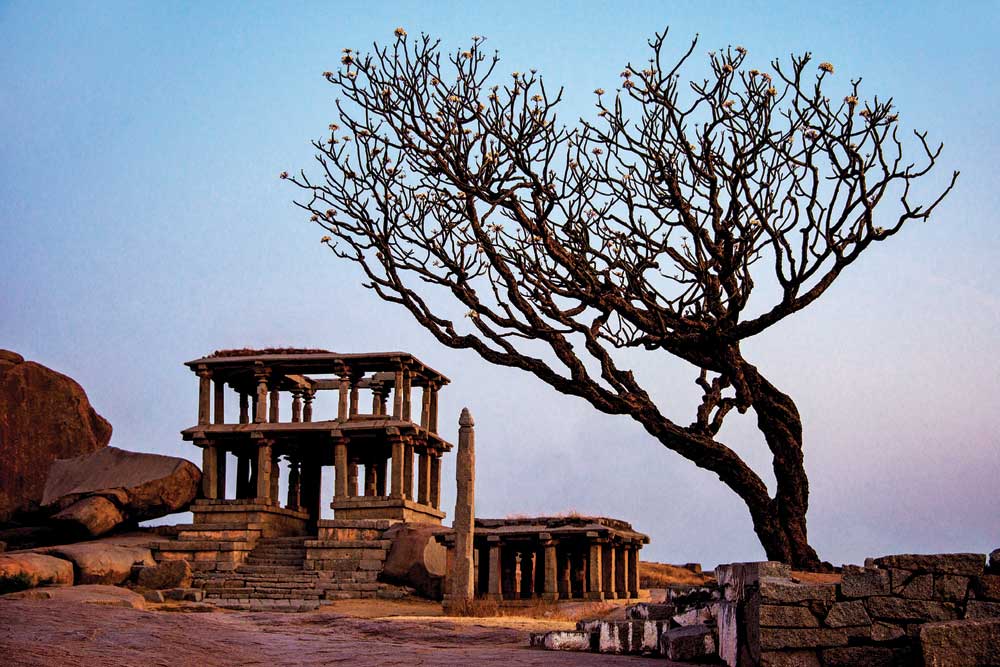Once on a hunting expedition, two chieftains – Hakka and Bukka - are astounded when a hare that was running for its life from their hound, suddenly turns back and attacks the hound itself. They report the happenings to their teacher Vidyaranya.
History of Hampi



The wise Vidyaranya asks Hakka and Bukka to establish their capital at that location as it had enabled a cowardly hare to turn courageous. Following their teachers’ instructions, Hakka and Bukka make that magical place their capital – which today is known as Hampi.
Records reveal that Hampi was the flourishing capital of Southern India’s popular empire called Vijayanagara.
Vijayanagara represented synthesis of South Indian culture. It encouraged Shaivism, Vaishnavism, Veerashaivism, Jainism, Srivaishnavism and other cults by making immense grants to their centers of worship. Sanskrit, Kannada, Tamil and Telugu literatures were patronized. Great religious leaders of these various cults and poets of these languages lived during the empires days. It encouraged dance, painting, sculpture, architecture, music and folk arts. Carnatic Music flowered during this period. The Dasara festival was an occasion to showcase these arts in addition to wrestling and dueling.
The greatest emperor to rule the Vijayanagara Empire was Krishnadevaraya who contributed to several of Hampi’s monuments.
King Krishnadevaraya was not only an art patron, but also one of the greatest warriors in Indian history. During his rule, he extended his kingdom to include present-day Orissa state of India and defeated any advancing sultans from North India. The Krishna temple and the Mahanavami Dibba were built to commemorate his victories. It was during his reign that Portuguese frequented Hampi as the Vijayanagar King had established good trade relations with Portuguese merchants. The Portuguese had conquered Goa in 1510 with Krishnadevaraya’s help. Apart from being a great warrior and administrator; Krishnadevaraya patronized South Indian languages like Kannada, Tamil, Telugu and also Sanskrit. He also encouraged temple construction and his reign witnessed great architectural progress. Apparently, the current Virupaksha temple’s gopura or tower was last renovated by this king.
We must now turn our attention to other significant aspects of Hampi history. Another mythological story that increases Hampi’s significance is the association of various locations in and around Hampi with the Hindu epic Ramayana. For instance, it is believed that the Anjaneya Hill located across the river Tungabadhra is the birth place of Hindu god Hanumantha. Myth also has it that Hindu god Rama and his brother Lakshmanna took refuge in the Malyavanta hill en-route to rescuing Rama’s consort Sita from the demon king Ravana. If you have time on your hands, visit the Rishyamukh hill, another location that is associated with Ramayana. It is apparently on this hill that Hindu god Hanumantha met his master Rama and his brother Lakshmanna. Another popular spot to catch the sunset and sunrise, Matanga hill; also has a mention in mythology. Accordingly Sugreeva, the king of the monkey army and his general Hanumantha of Ramayana took refuge in this hill while escaping the fury of the monkey prince Vali.